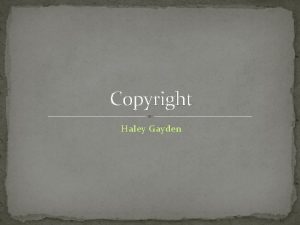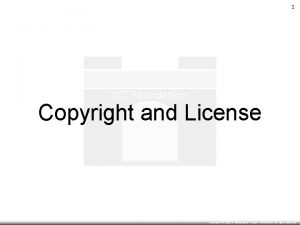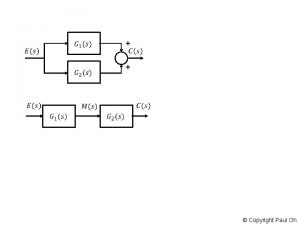Part 8 Chapter 29 1 Copyright The Mc






![The Laplacian Difference Equations/ Laplace Equation O[D(x)2] O[D(y)2] Laplacian difference equation. Holds for all The Laplacian Difference Equations/ Laplace Equation O[D(x)2] O[D(y)2] Laplacian difference equation. Holds for all](https://slidetodoc.com/presentation_image_h/c5e21a95e7f81fd5655c267f502ac087/image-7.jpg)












- Slides: 19

Part 8 Chapter 29 1 Copyright © The Mc. Graw-Hill Companies, Inc. Permission required for reproduction or display.

Part 8 Partial Differential Equations Table PT 8. 1 2 Copyright © The Mc. Graw-Hill Companies, Inc. Permission required for reproduction or display.

Figure PT 8. 4 3 Copyright © The Mc. Graw-Hill Companies, Inc. Permission required for reproduction or display.

Finite Difference: Elliptic Equations Chapter 29 Solution Technique • Elliptic equations in engineering are typically used to characterize steady-state, boundary value problems. • For numerical solution of elliptic PDEs, the PDE is transformed into an algebraic difference equation. • Because of its simplicity and general relevance to most areas of engineering, we will use a heated plate as an example for solving elliptic PDEs. 4 Copyright © The Mc. Graw-Hill Companies, Inc. Permission required for reproduction or display.

Figure 29. 1 5 Copyright © The Mc. Graw-Hill Companies, Inc. Permission required for reproduction or display.

Figure 29. 3 6 Copyright © The Mc. Graw-Hill Companies, Inc. Permission required for reproduction or display.
![The Laplacian Difference Equations Laplace Equation ODx2 ODy2 Laplacian difference equation Holds for all The Laplacian Difference Equations/ Laplace Equation O[D(x)2] O[D(y)2] Laplacian difference equation. Holds for all](https://slidetodoc.com/presentation_image_h/c5e21a95e7f81fd5655c267f502ac087/image-7.jpg)
The Laplacian Difference Equations/ Laplace Equation O[D(x)2] O[D(y)2] Laplacian difference equation. Holds for all interior points 7 Copyright © The Mc. Graw-Hill Companies, Inc. Permission required for reproduction or display.

Figure 29. 4 8 Copyright © The Mc. Graw-Hill Companies, Inc. Permission required for reproduction or display.

• In addition, boundary conditions along the edges must be specified to obtain a unique solution. • The simplest case is where the temperature at the boundary is set at a fixed value, Dirichlet boundary condition. • A balance for node (1, 1) is: • Similar equations can be developed for other interior points to result a set of simultaneous equations. 9 Copyright © The Mc. Graw-Hill Companies, Inc. Permission required for reproduction or display.

• The result is a set of nine simultaneous equations with nine unknowns: 10 Copyright © The Mc. Graw-Hill Companies, Inc. Permission required for reproduction or display.

The Liebmann Method/ • Most numerical solutions of Laplace equation involve systems that are very large. • For larger size grids, a significant number of terms will b e zero. • For such sparse systems, most commonly employed approach is Gauss-Seidel, which when applied to PDEs is also referred as Liebmann’s method. 11 Copyright © The Mc. Graw-Hill Companies, Inc. Permission required for reproduction or display.

Boundary Conditions • We will address problems that involve boundaries at which the derivative is specified and boundaries that are irregularly shaped. Derivative Boundary Conditions/ • Known as a Neumann boundary condition. • For the heated plate problem, heat flux is specified at the boundary, rather than the temperature. • If the edge is insulated, this derivative becomes zero. 12 Copyright © The Mc. Graw-Hill Companies, Inc. Permission required for reproduction or display.

Figure 29. 7 13 Copyright © The Mc. Graw-Hill Companies, Inc. Permission required for reproduction or display.

• Thus, the derivative has been incorporated into the balance. • Similar relationships can be developed for derivative boundary conditions at the other edges. 14 Copyright © The Mc. Graw-Hill Companies, Inc. Permission required for reproduction or display.

Irregular Boundaries • Many engineering problems exhibit irregular boundaries. Figure 29. 9 15 Copyright © The Mc. Graw-Hill Companies, Inc. Permission required for reproduction or display.

• First derivatives in the x direction can be approximated as: 16 Copyright © The Mc. Graw-Hill Companies, Inc. Permission required for reproduction or display.

• A similar equation can be developed in the y direction. Figure 29. 12 Control-Volume Approach 17 Copyright © The Mc. Graw-Hill Companies, Inc. Permission required for reproduction or display.

Figure 29. 13 18 Copyright © The Mc. Graw-Hill Companies, Inc. Permission required for reproduction or display.

• The control-volume approach resembles the point-wise approach in that points are determined across the domain. • In this case, rather than approximating the PDE at a point, the approximation is applied to a volume surrounding the point. 19 Copyright © The Mc. Graw-Hill Companies, Inc. Permission required for reproduction or display.
 Hình ảnh bộ gõ cơ thể búng tay
Hình ảnh bộ gõ cơ thể búng tay Frameset trong html5
Frameset trong html5 Bổ thể
Bổ thể Tỉ lệ cơ thể trẻ em
Tỉ lệ cơ thể trẻ em Voi kéo gỗ như thế nào
Voi kéo gỗ như thế nào Tư thế worms-breton
Tư thế worms-breton Alleluia hat len nguoi oi
Alleluia hat len nguoi oi Các môn thể thao bắt đầu bằng tiếng chạy
Các môn thể thao bắt đầu bằng tiếng chạy Thế nào là hệ số cao nhất
Thế nào là hệ số cao nhất Các châu lục và đại dương trên thế giới
Các châu lục và đại dương trên thế giới Công của trọng lực
Công của trọng lực Trời xanh đây là của chúng ta thể thơ
Trời xanh đây là của chúng ta thể thơ Cách giải mật thư tọa độ
Cách giải mật thư tọa độ 101012 bằng
101012 bằng độ dài liên kết
độ dài liên kết Các châu lục và đại dương trên thế giới
Các châu lục và đại dương trên thế giới Thơ thất ngôn tứ tuyệt đường luật
Thơ thất ngôn tứ tuyệt đường luật Quá trình desamine hóa có thể tạo ra
Quá trình desamine hóa có thể tạo ra Một số thể thơ truyền thống
Một số thể thơ truyền thống Cái miệng nó xinh thế chỉ nói điều hay thôi
Cái miệng nó xinh thế chỉ nói điều hay thôi





































